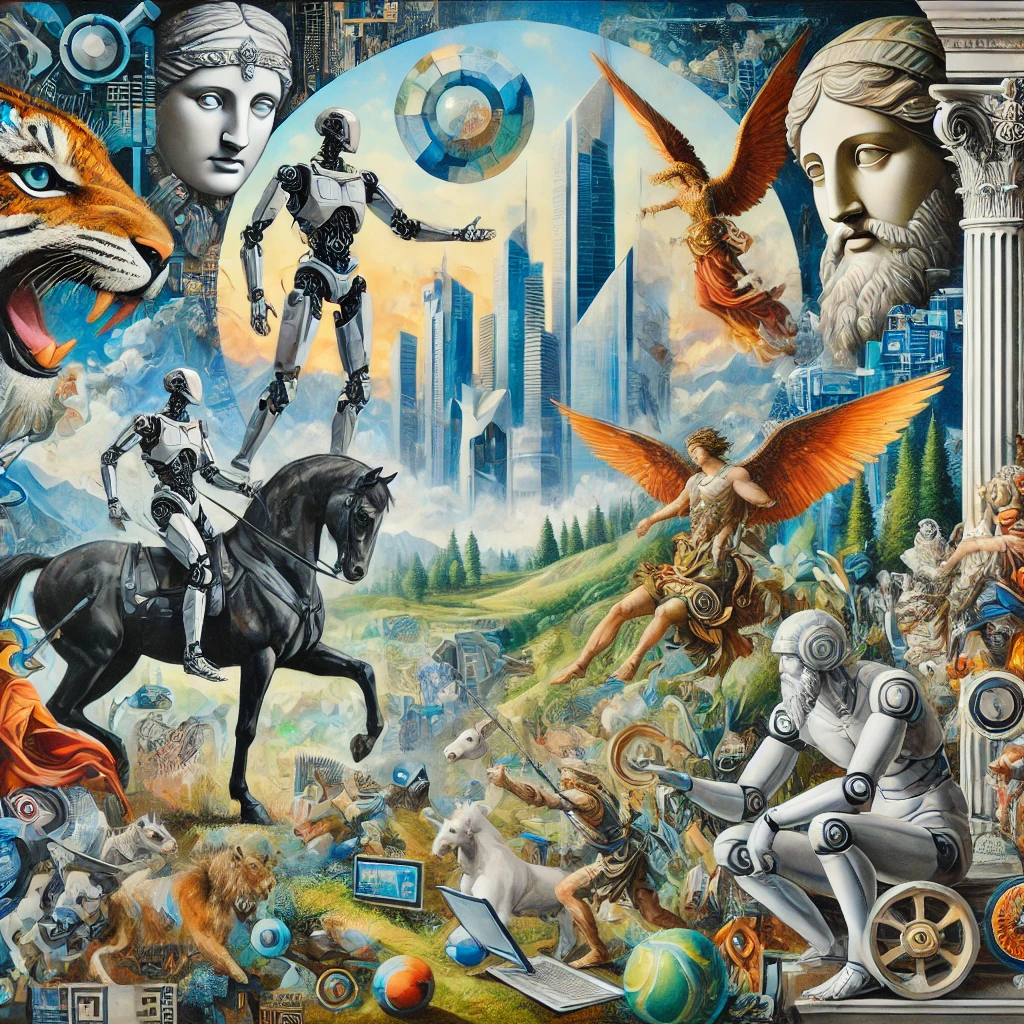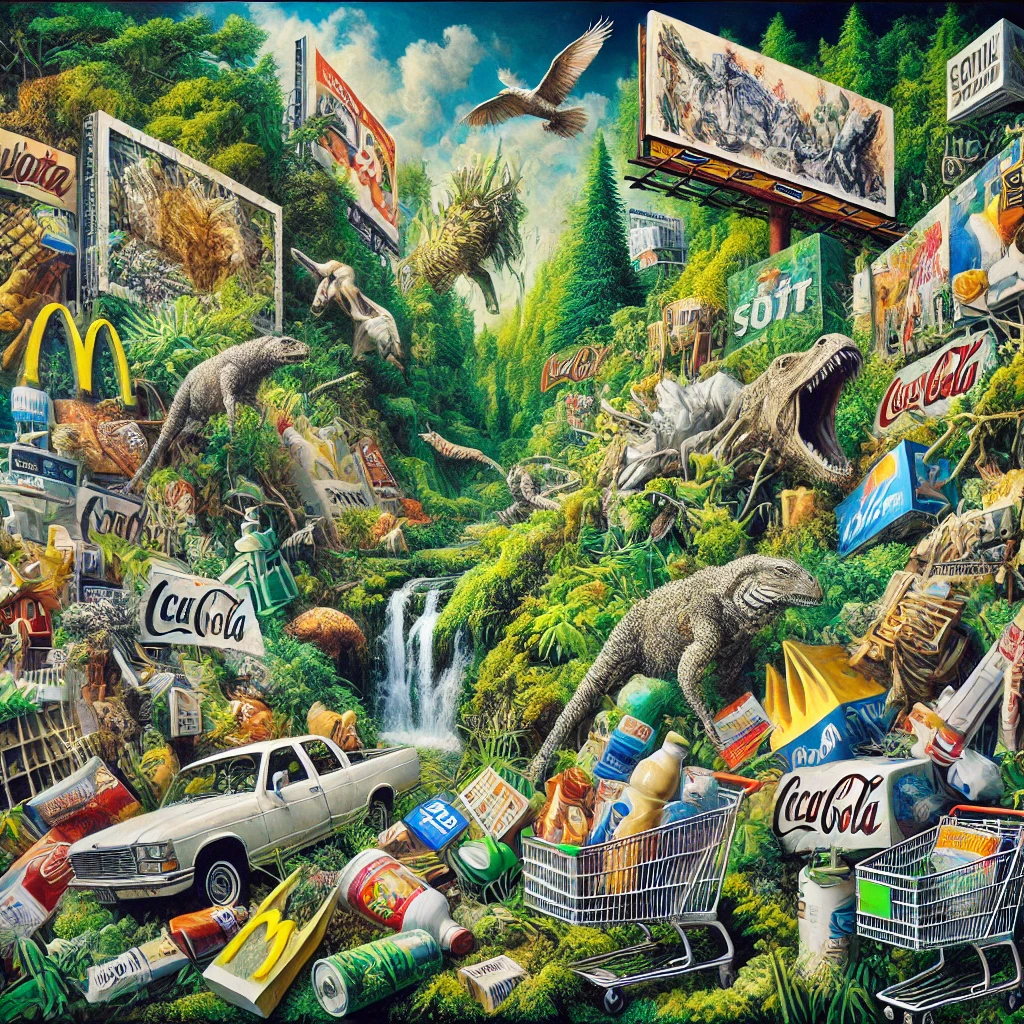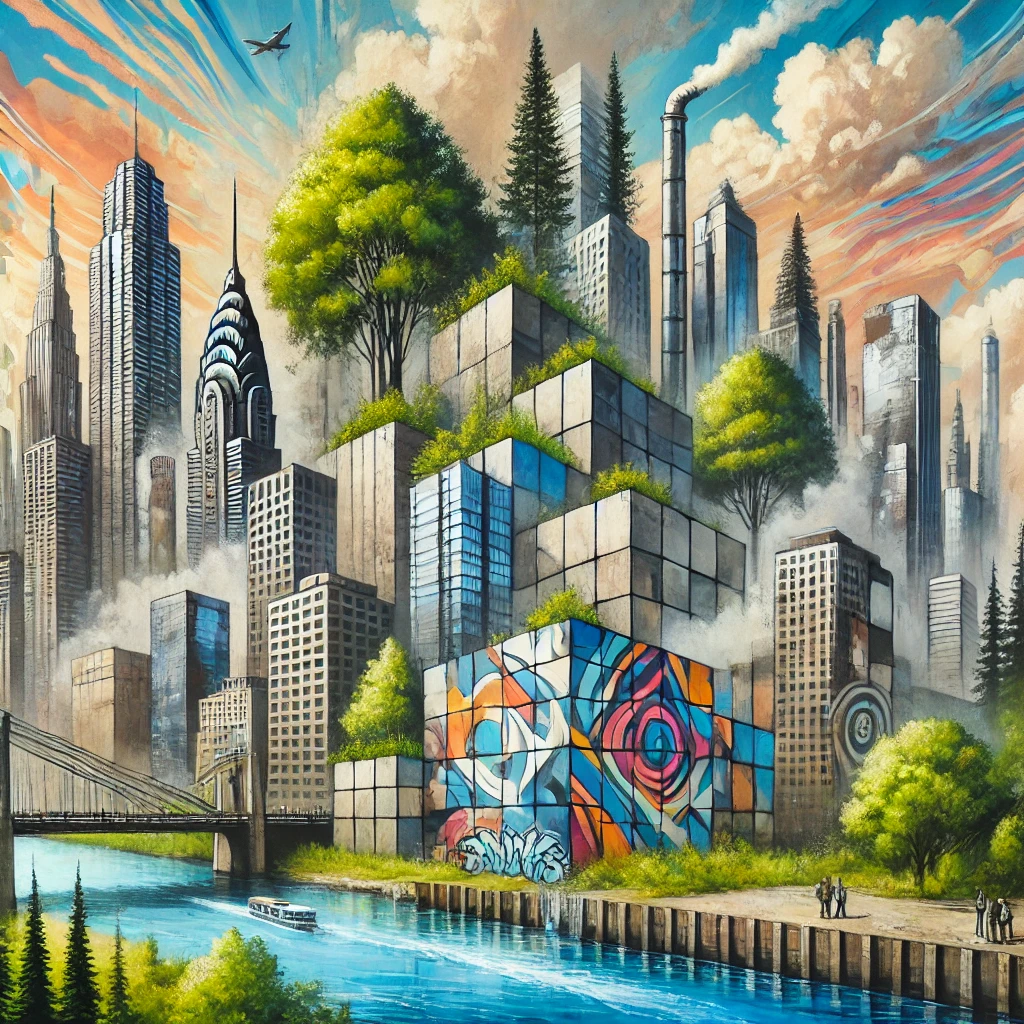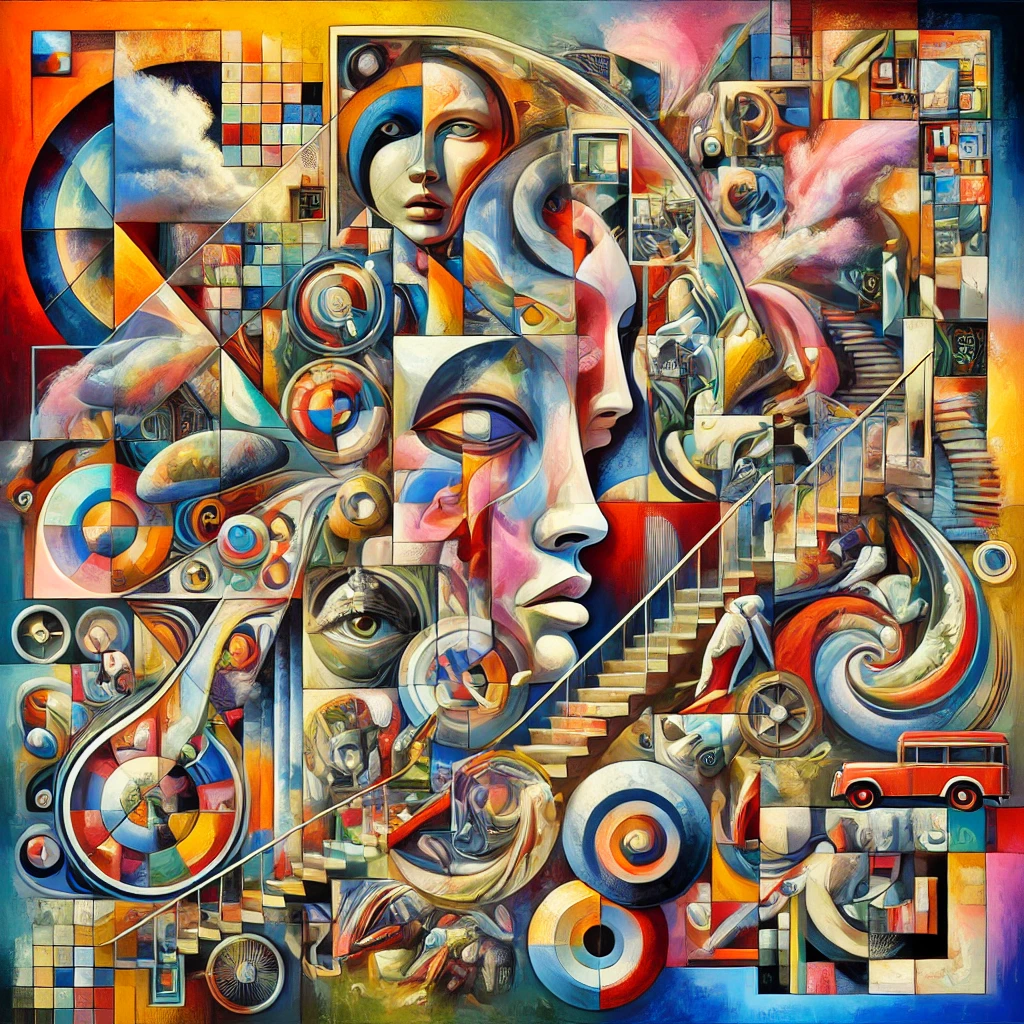Postmodernism.org could serve as a comprehensive resource for exploring the rich and varied landscape of postmodern thought, art, architecture, and culture. The domain name immediately suggests a deep dive into the multifaceted and often contradictory nature of postmodernism, inviting scholars, students, artists, and enthusiasts to engage with a wide range of materials and discussions. At the heart of Postmodernism.org, a robust and dynamic content structure could feature articles, essays, and critiques that span the entirety of postmodern theory. This would include seminal works by key figures such as Jean-François Lyotard, Jacques Derrida, and Michel Foucault, whose writings have profoundly influenced the understanding of postmodernism. Detailed analyses and summaries of their concepts—such as Lyotard’s “incredulity towards metanarratives,” Derrida’s deconstruction, and Foucault’s discourse on power and knowledge—would be essential components.




The first postmodernistic painting captures a chaotic blend of bright colors and abstract shapes. It features fragmented forms that seem to swirl and collide, creating a dynamic and disorienting composition. Elements of surrealism are evident in the distorted figures and dream-like landscapes that weave through the scene. Everyday objects appear in unexpected places, adding to the sense of unpredictability and layered meanings. The overall effect is thought-provoking, inviting the viewer to explore the complex interplay of forms and colors.
The second postmodernistic painting portrays a fascinating blend of urban and natural elements. Skyscrapers are interspersed with lush trees and flowing rivers, creating a juxtaposition of human-made and natural environments. Fragmented architectural structures float or distort within the scene, adding a surreal quality. Vibrant graffiti art is woven into the composition, bringing an additional layer of modern urban culture. The overall effect is both familiar and dream-like, highlighting the complex interplay between the constructed world and the natural landscape.
The third postmodernistic painting presents a captivating fusion of futuristic technology and ancient mythology. Robotic figures interact with mythological creatures, such as dragons and centaurs, against a backdrop where a modern cityscape seamlessly merges with ancient ruins. The colors are vibrant and contrasting, creating a striking visual impact that draws the viewer’s attention. This scene evokes a sense of timelessness, blending different eras and realms into a single, harmonious composition, highlighting the coexistence of the past and the future.
The fourth postmodernistic painting delivers a striking commentary on the juxtaposition of nature and consumerism. Lush, detailed depictions of flora and fauna intertwine with commercial products and advertisements, creating a visually rich and thought-provoking scene. Fragmented billboards, shopping carts, and product packaging blend seamlessly into natural landscapes, highlighting the intrusion of consumer culture into the environment. The colors are vivid, with natural greens juxtaposed against commercial neon tones, enhancing the contrast between the two worlds. This composition evokes a powerful reflection on the impact of consumerism on the natural world, urging viewers to consider the consequences of their consumption habits.
The website could also host a curated collection of postmodern art and architecture, showcasing works that epitomize the style’s playful, ironic, and eclectic nature. Visual galleries and virtual tours could provide an immersive experience, featuring iconic structures like Frank Gehry’s Guggenheim Museum in Bilbao or Philip Johnson’s AT&T Building. These sections would be enriched with detailed descriptions, critical reviews, and interviews with contemporary artists and architects who draw inspiration from postmodern aesthetics.

Frank Gehry’s Guggenheim Museum in Bilbao
To foster a vibrant and interactive community, Postmodernism.org could include forums and discussion boards where users can debate and discuss various aspects of postmodern theory and practice. These platforms could facilitate scholarly discussions, peer reviews, and the sharing of new ideas and interpretations. Additionally, a blog section might feature guest posts from leading thinkers in the field, offering fresh perspectives on current trends and developments within postmodernism.
Educational resources would be a critical component of the site, providing teachers and students with tools to better understand and teach postmodernism. This could include lesson plans, reading lists, and multimedia resources like videos and podcasts. An online library could house a collection of primary texts, critical essays, and rare documents, making it an invaluable resource for academic research.
Events and exhibitions could also play a significant role in the site’s offerings. Listings of conferences, lectures, and gallery shows around the world would help users stay connected with the global postmodern community. Live-streamed events and webinars could further enhance this connectivity, allowing users to participate in real-time discussions and viewings regardless of their geographical location.
In terms of design, Postmodernism.org should embody the very principles it seeks to explore. The website’s layout and interface could reflect postmodern design elements, characterized by bold colors, unusual structures, and a mix of different media. Interactive elements, such as hyperlinked texts and multimedia integration, would enhance user engagement and reflect the interconnected nature of postmodern thought.
Ultimately, Postmodernism.org could become a leading online destination for anyone interested in the complexities and contradictions of postmodernism. By providing a platform that is both informative and interactive, it would offer a space where the past, present, and future of postmodern thought can be explored and debated in depth. This site could celebrate the diversity and dynamism of postmodernism, making its theories and aesthetics accessible to a broad audience.
- Shooting Photographs for Art Prints
- Print Horizons 2026: The Shows Shaping the Next Wave of Ink, Paper, and Possibility
- TEAM Concept Printing Wins 2025 Innovation Print Award, May 2025, Chicago
- FUJIFILM Launches ACUITY TR with AQUAFUZE Ink Technology in the U.S.
- The Best Cameras for Large-Size Prints
- FUJIFILM at PRINTING United Expo 2025, October 22–24, Orlando, Florida
- The Enduring Charm of Print: Travel Guides Are Still Alive
- Andy Warhol’s “Sunset” Series: A Symphony of Color and Form
- Bustling Commerce: The Rice Market at Dojima in Edo Period Osaka
- Modern & Contemporary Art Auction at John Moran: Featuring Staprans, Rockwell, and More on June 11th, 2024
- Poster: Go Light, Don’t Be That Photographer
- Poster: Backpacking Before It Got Comfortable
- A Grand Arrival Amid Stacks of Steel and Sea
- Vigilant Elegance: The Tuxedo Cat in Its Element
- Golden Oranges Beneath a Shadow of Mortality: A Godfather Reflection
- Photojournalists - A Sense Of Conflict
- Midnight Carnival
- Metropolis
- A Dreamy Beach Vacation Poster
- Visual Storytelling Poster